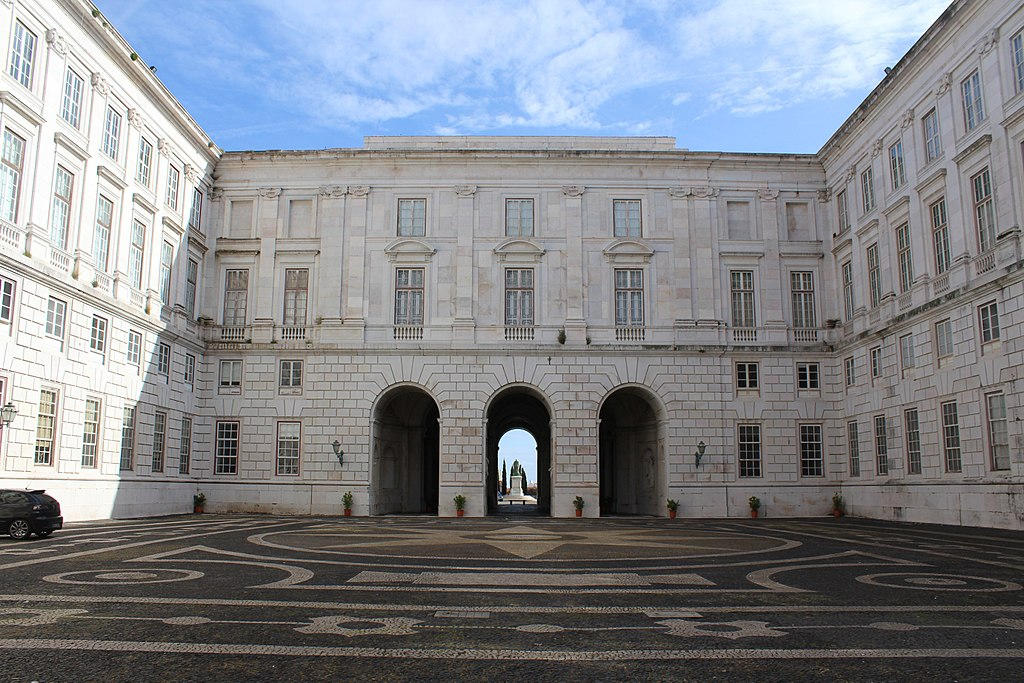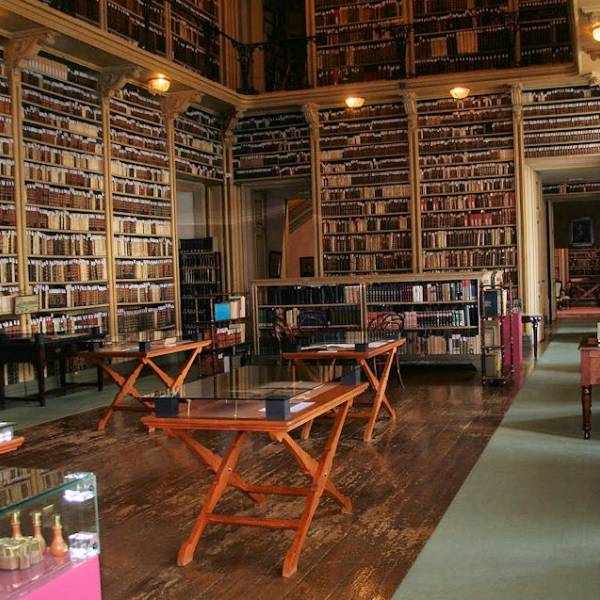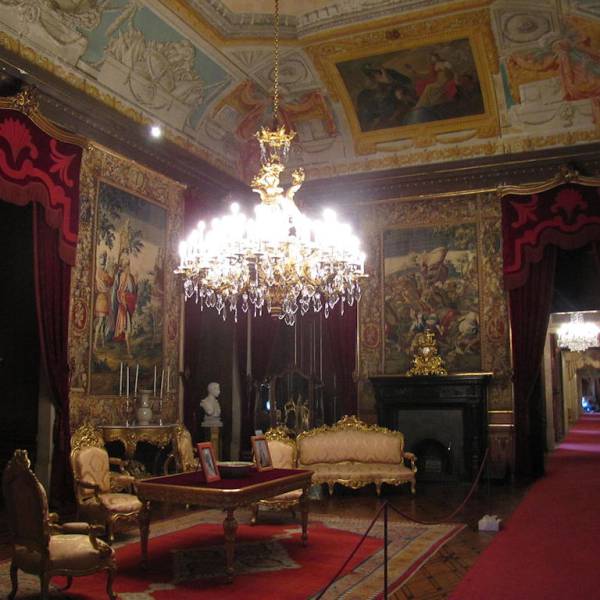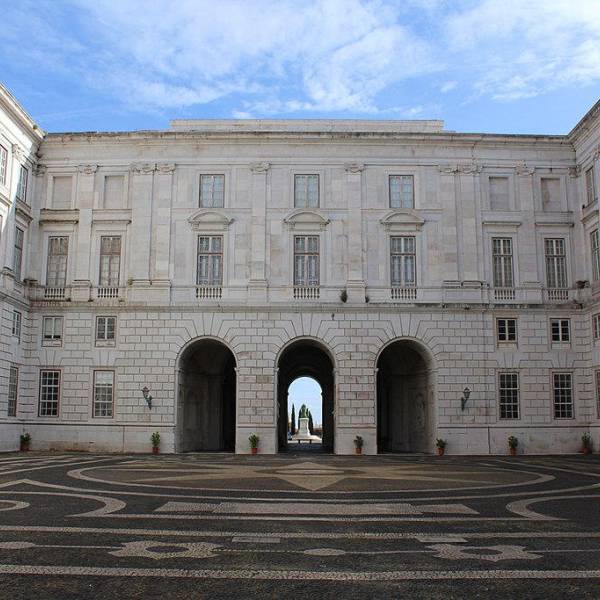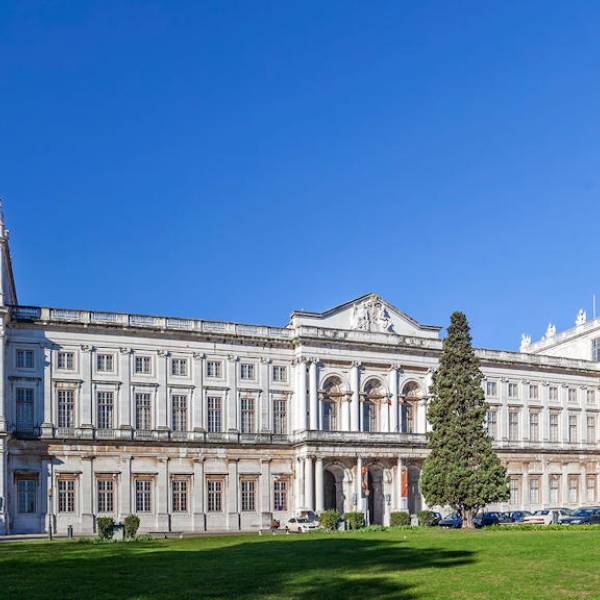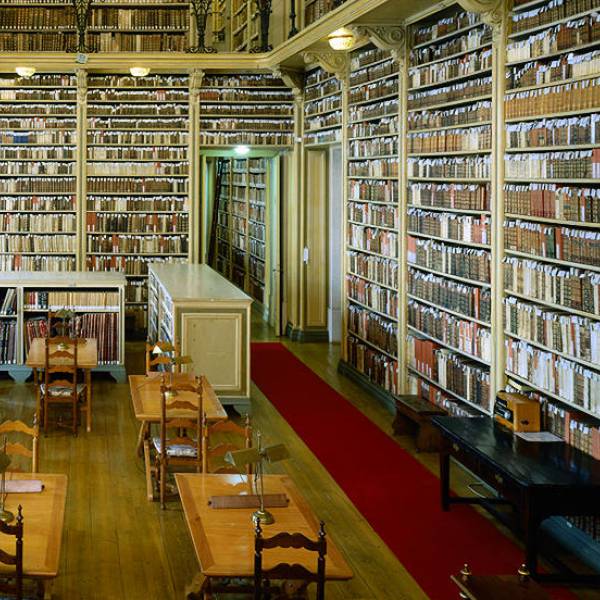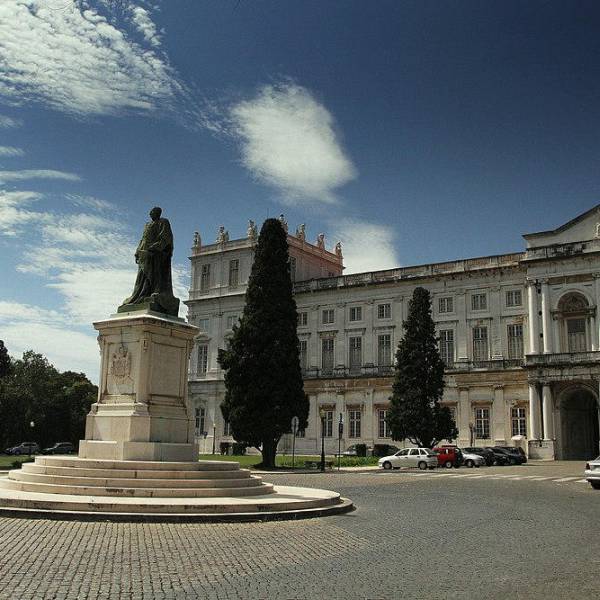Ajuda National Palace, an exquisite
Neoclassical marvel, graces Lisbon with its presence. This irregular rectangular building stands divided into four wings, forming a magnificent quadrangle adorned with stunning Portuguese calçada in captivating geometric designs. Each wing serves a distinct purpose, with the eastern and southern wings showcasing captivating museum exhibitions of the Palace of Ajuda. The northern wing, on the other hand, houses esteemed institutions such as the Instituto de Museus e Conservação and the Instituto de Gestão do Património Arquitectónico e Arqueológico. The Secretaria-Geral do Ministério da Cultura, Ajuda Library, and a temporary exhibit gallery also find their abode within the northern wing's embrace.
As you marvel at the palace's grandeur, you'll notice its transformation into a two-three storey structure on an inclined plot of land. The facade, crafted from ashlar limestone, captivates the eye with its symmetrical beauty facing eastward. The central body and tympanum extend gracefully, accompanied by two elegant lateral towers. This two-storey facade boasts an inferior level marked by three arches, embellished with Tuscan-Ionian columns that support the secondary floor/veranda. Ascend to the second floor, and you'll discover a space protected by balusters guarding three Roman arch-windows, adorned with a delicate frieze of garlands. The enchanting view is further enhanced by six Tuscan-Ionic columns that elegantly divide the space.
Marvel at the captivating details that grace the panels between the central body and towers. Each panel, consisting of two floors and a mezzanine, is demarcated by two orders of columns: Tuscan on the first floor and Tuscan-Ionic on the second. Moulded and trimmed sills with cornices adorn the first-floor windows, while the upper floor boasts veranda-like railings and smaller square windows above. The majestic three-storey towers, divided by Tuscan and Tuscan-Ionic columns, display a captivating architectural symphony. The first floor stands proud with three windows and angular cornices on the outside, transitioning to rounded cornices on the interior. The intermediary floor mirrors this pattern, and the third-floor windows gracefully sit beneath smaller windows, much like the panels. Meanwhile, the southern lateral facade boasts three storeys adorned with a succession of 19 windows, echoing the magnificence of the main entrance. Notably, niches grace the base, adding a touch of elegance to the scene. The uncompleted western facade reveals intriguing traces of various dependencies, showcasing a wall of open window sills and arches adorned with Tuscan pillars. Access to the central courtyard is granted through three rounded arches, whispering tales of unfinished beauty. Within the vast foyer, adorned with Tuscan columns, you'll encounter twenty-two marble statues, some bearing the signatures of their creators, a testament to their timeless artistry.
Embark on your journey through the palace, as the vestibule beckons you into its embrace. Through monumental staircases and graceful rounded arches, you'll find your path to the Library and Exhibition Gallery. Stepping into the ample courtyard, your gaze is captivated by the artistry beneath your feet—a splendid Portuguese calçada, paving the way for your exploration. The courtyard, surrounded by two four-storey wings on the north and south, unveils a grand spectacle. The main floor, with its central arch and doorway, stands adorned with rectangular windows topped by smaller square windows. As your eyes ascend, the superior floors reveal veranda-windows with simple frames, cornices, and elegant balusters/guardrails, showcasing the palace's architectural finesse in all its glory.


